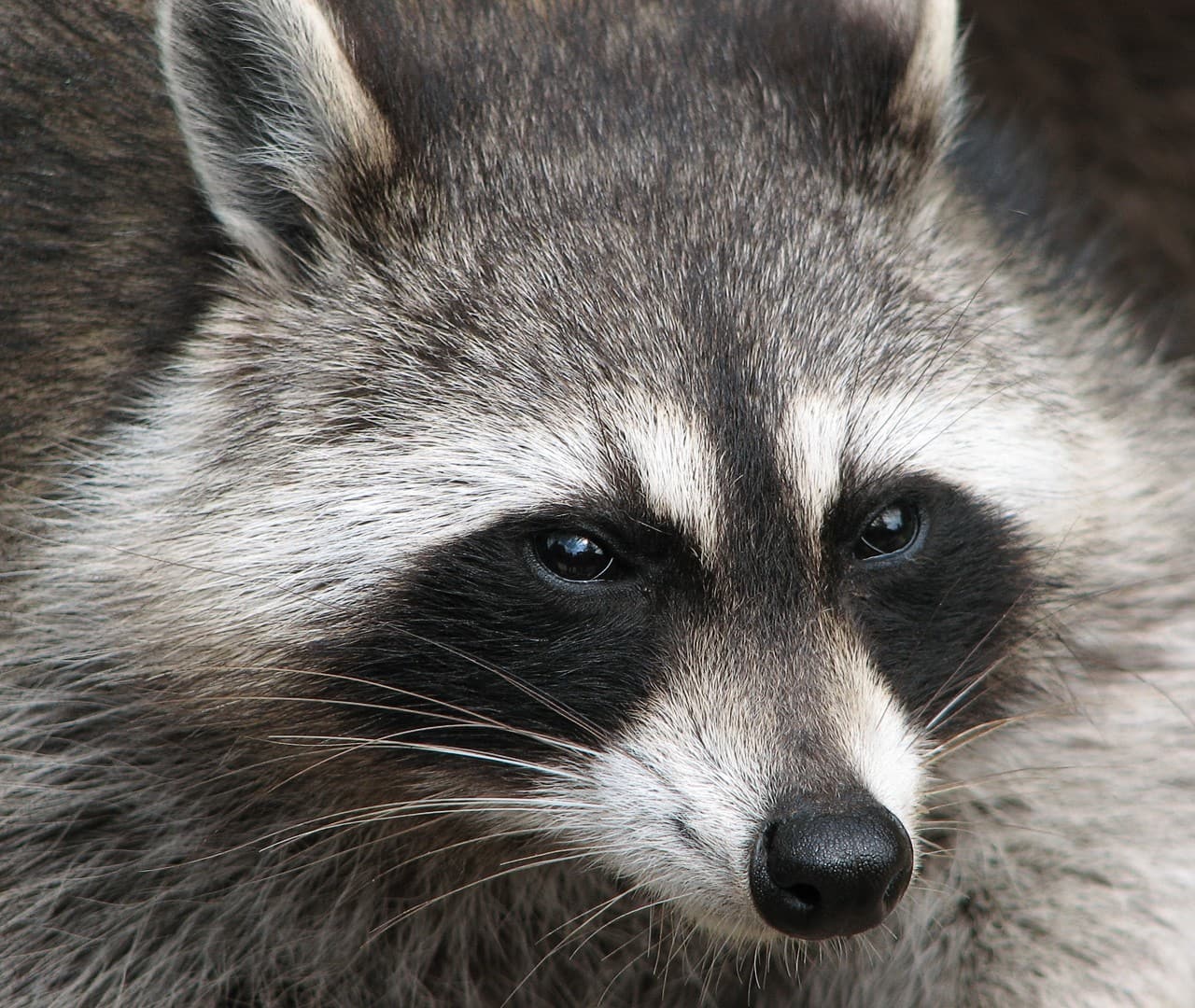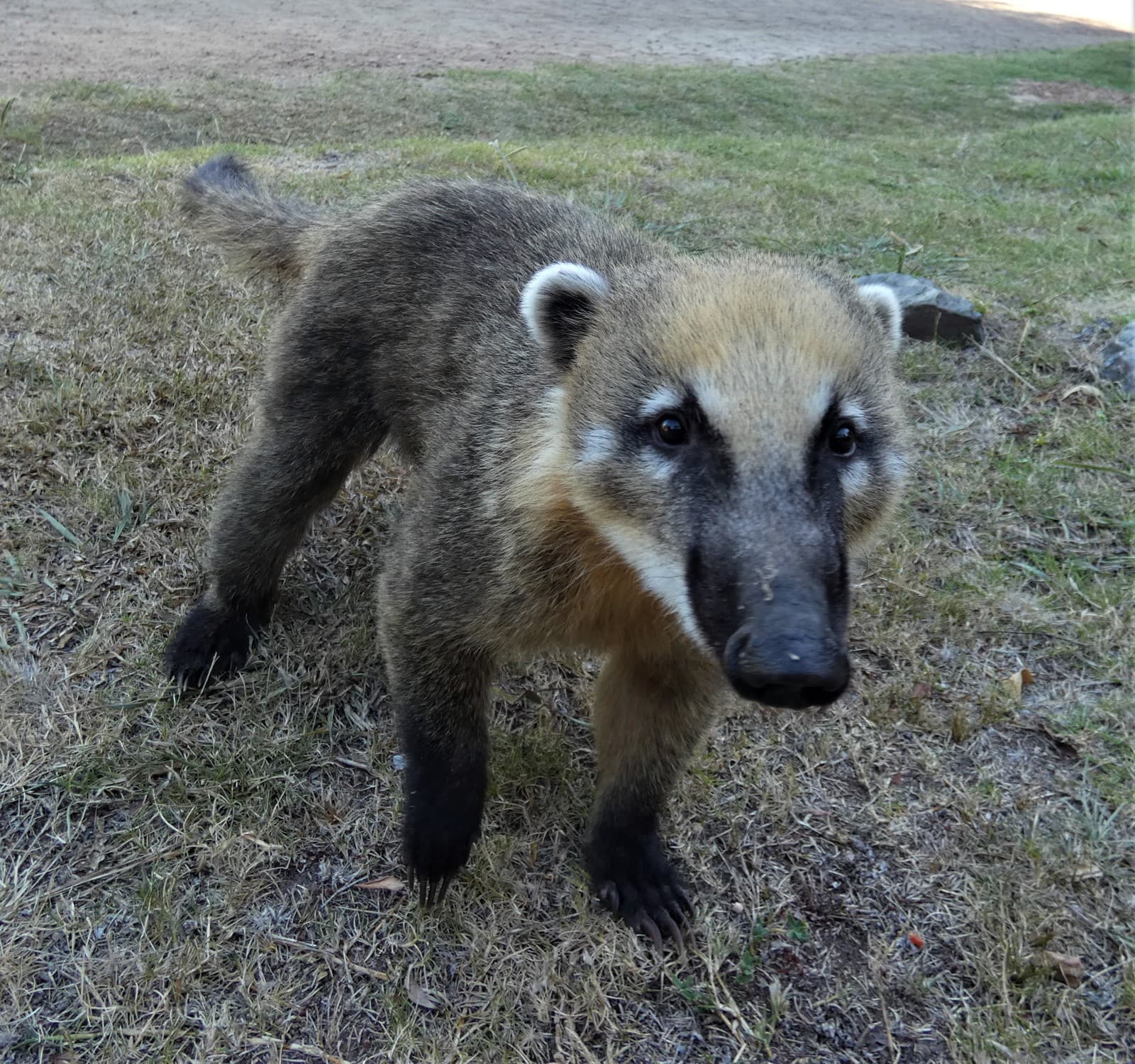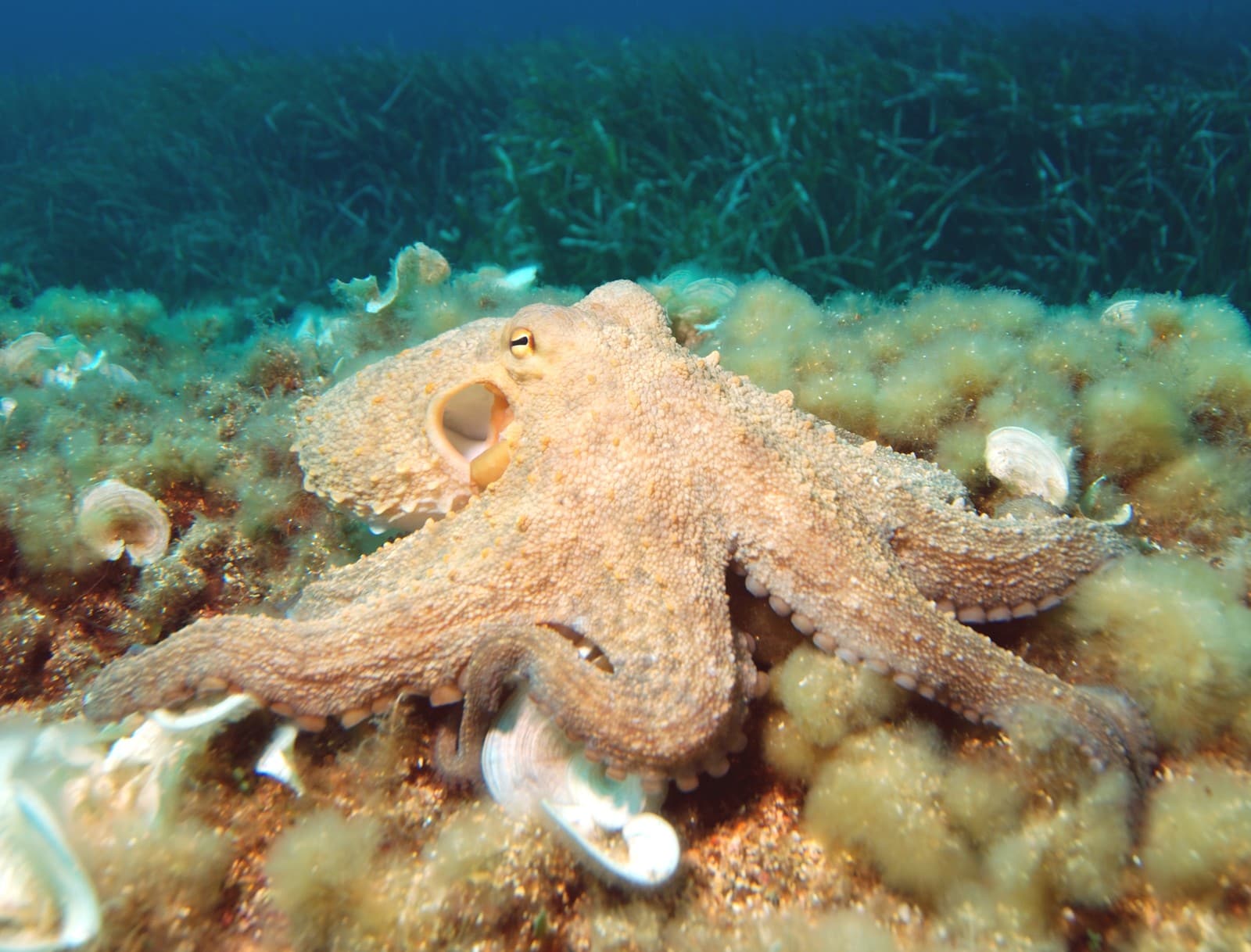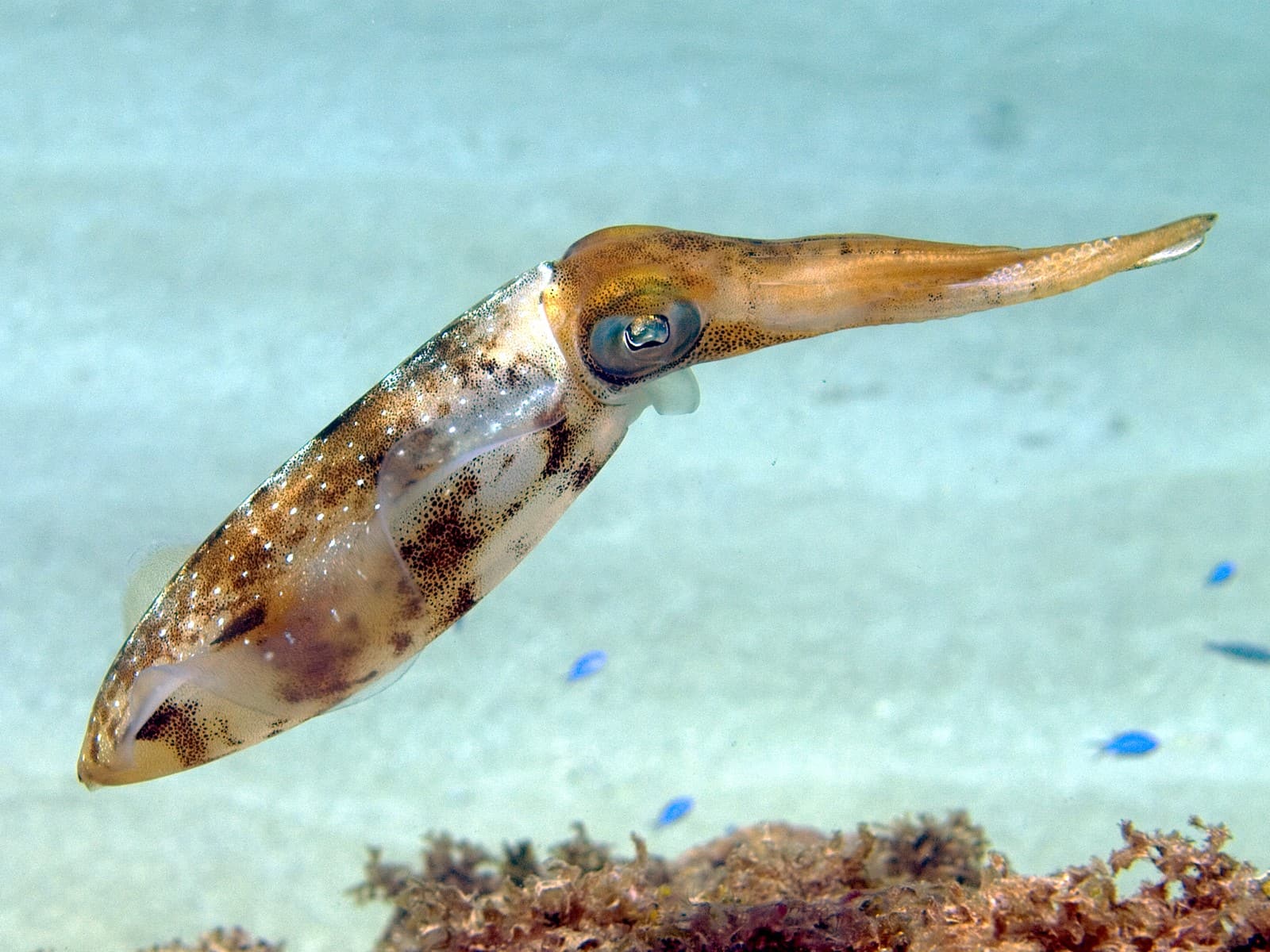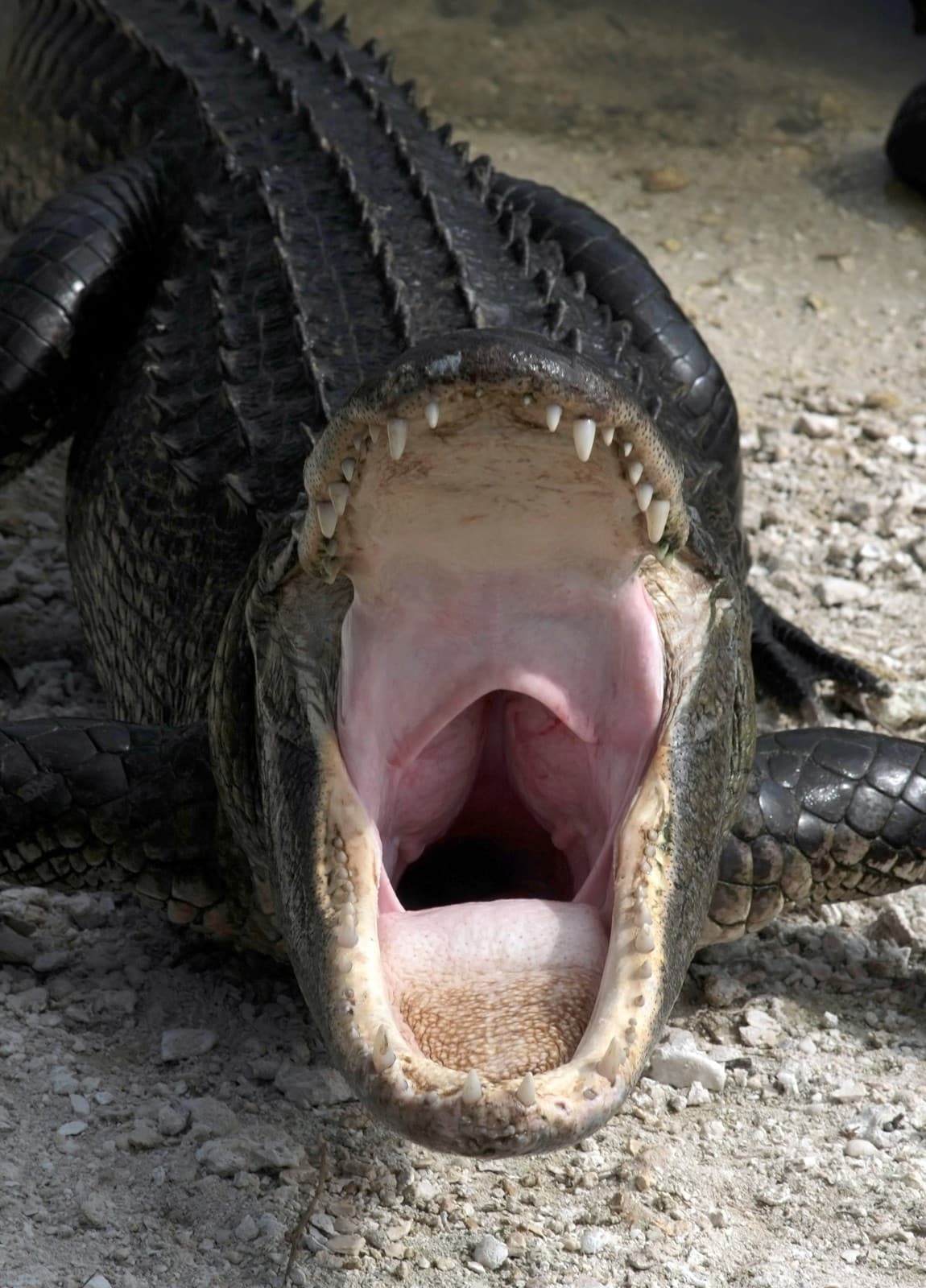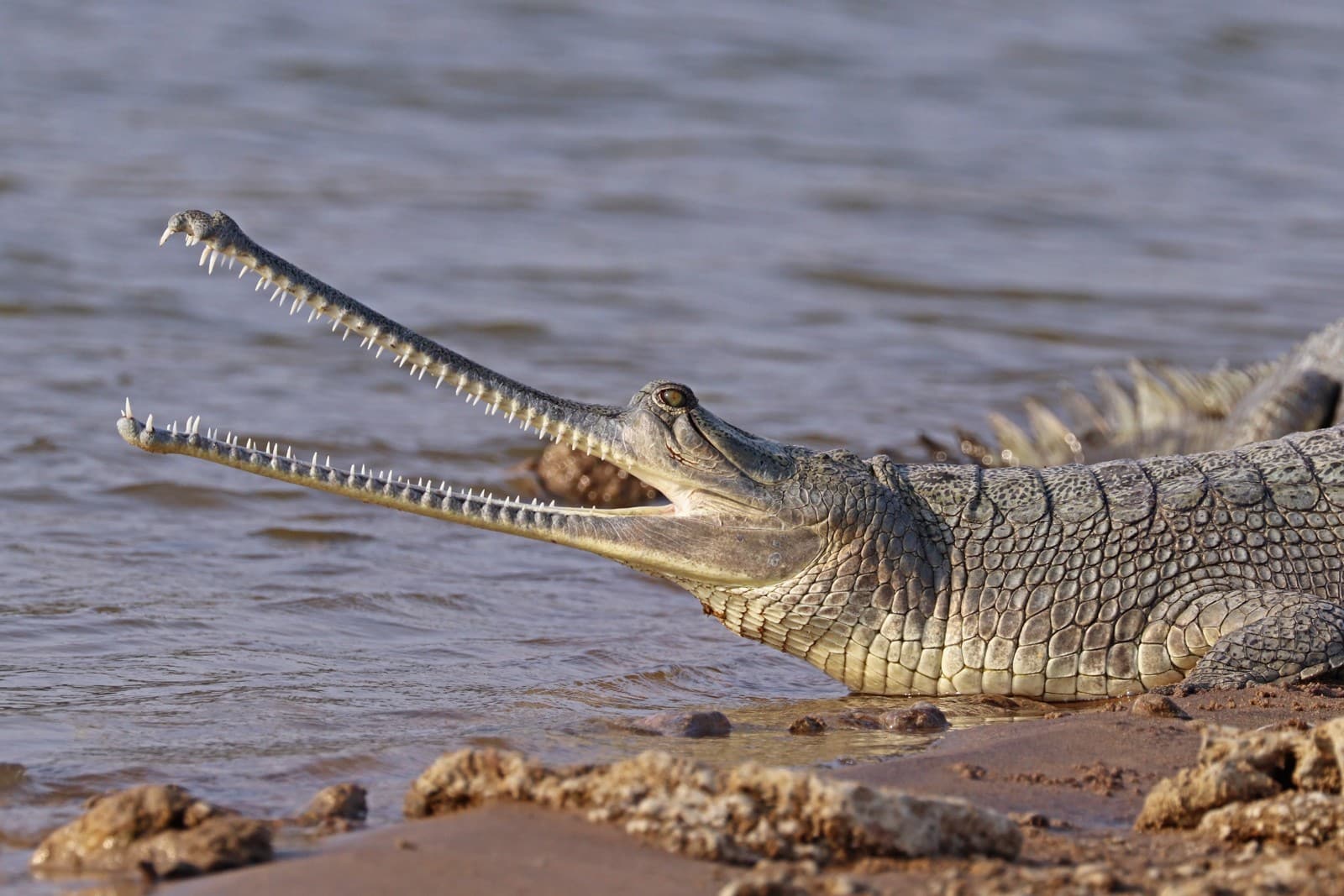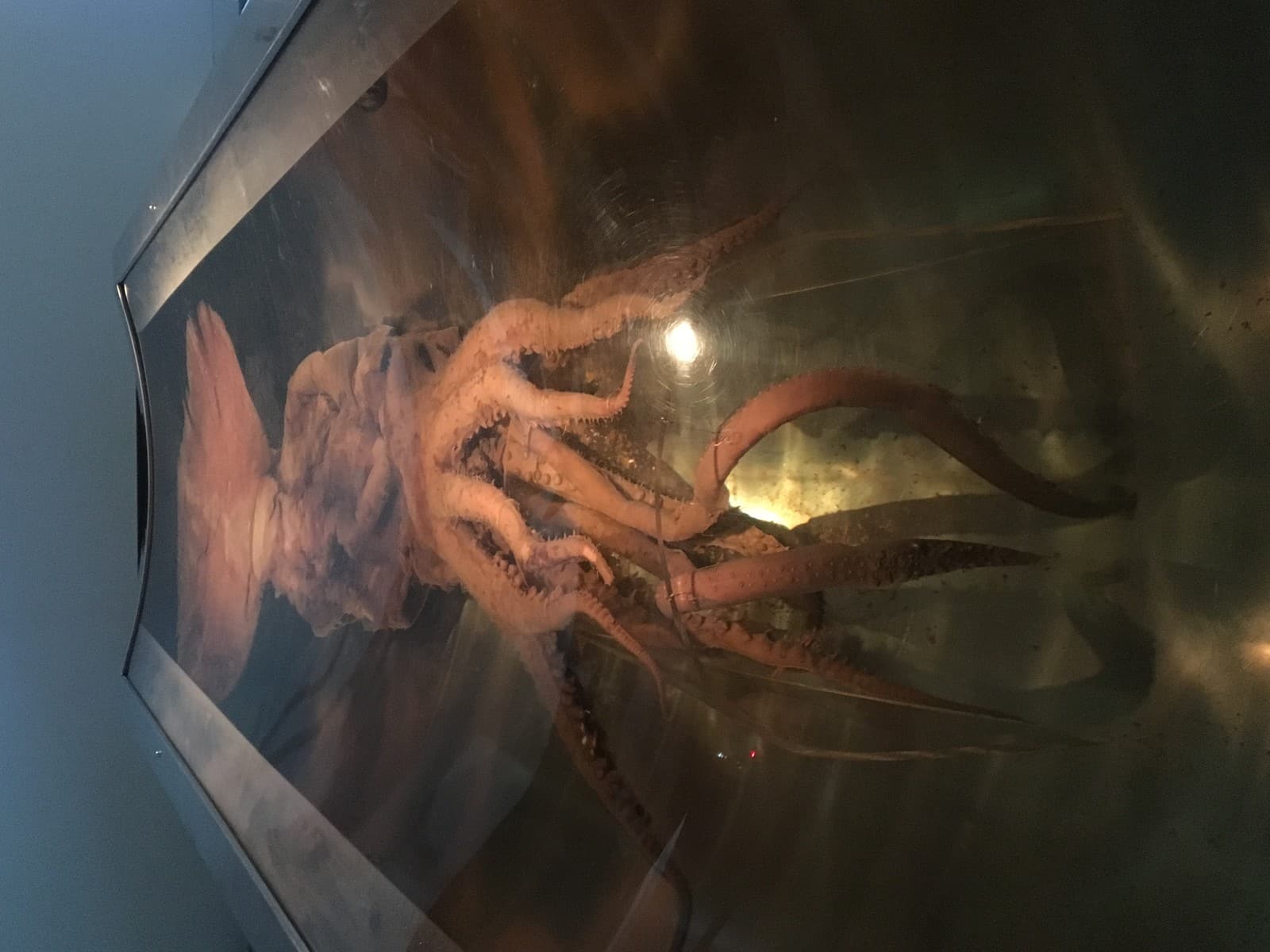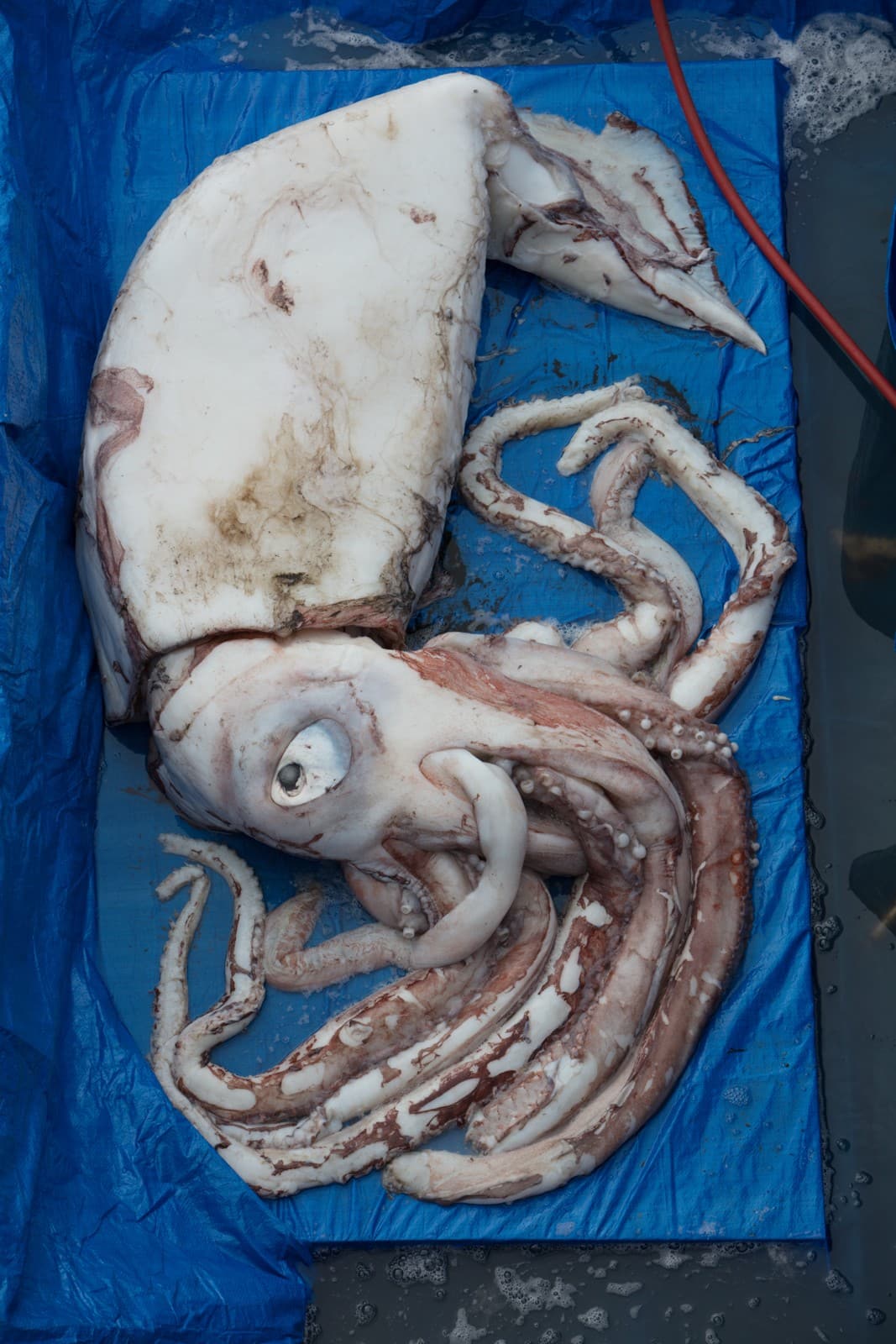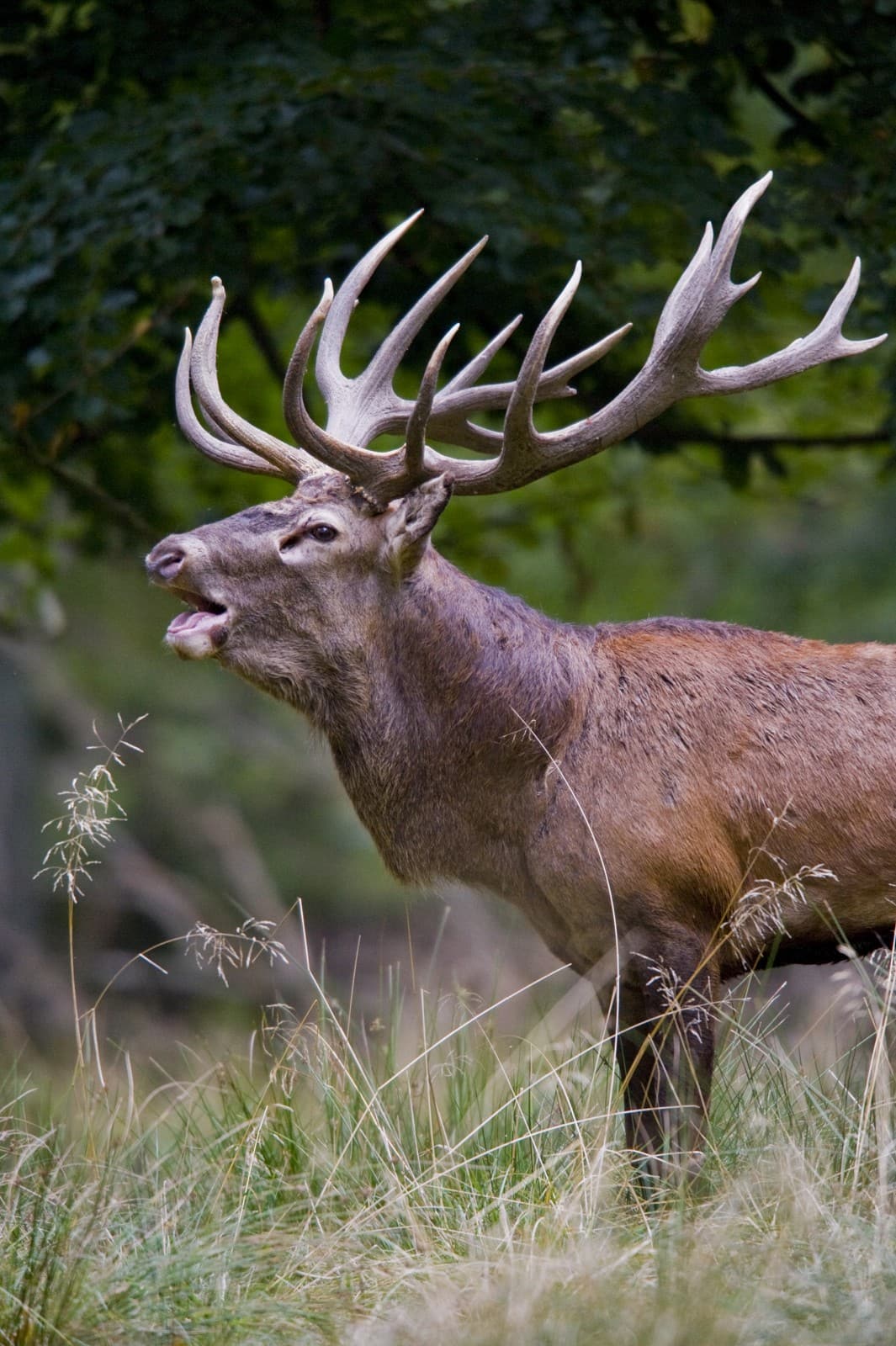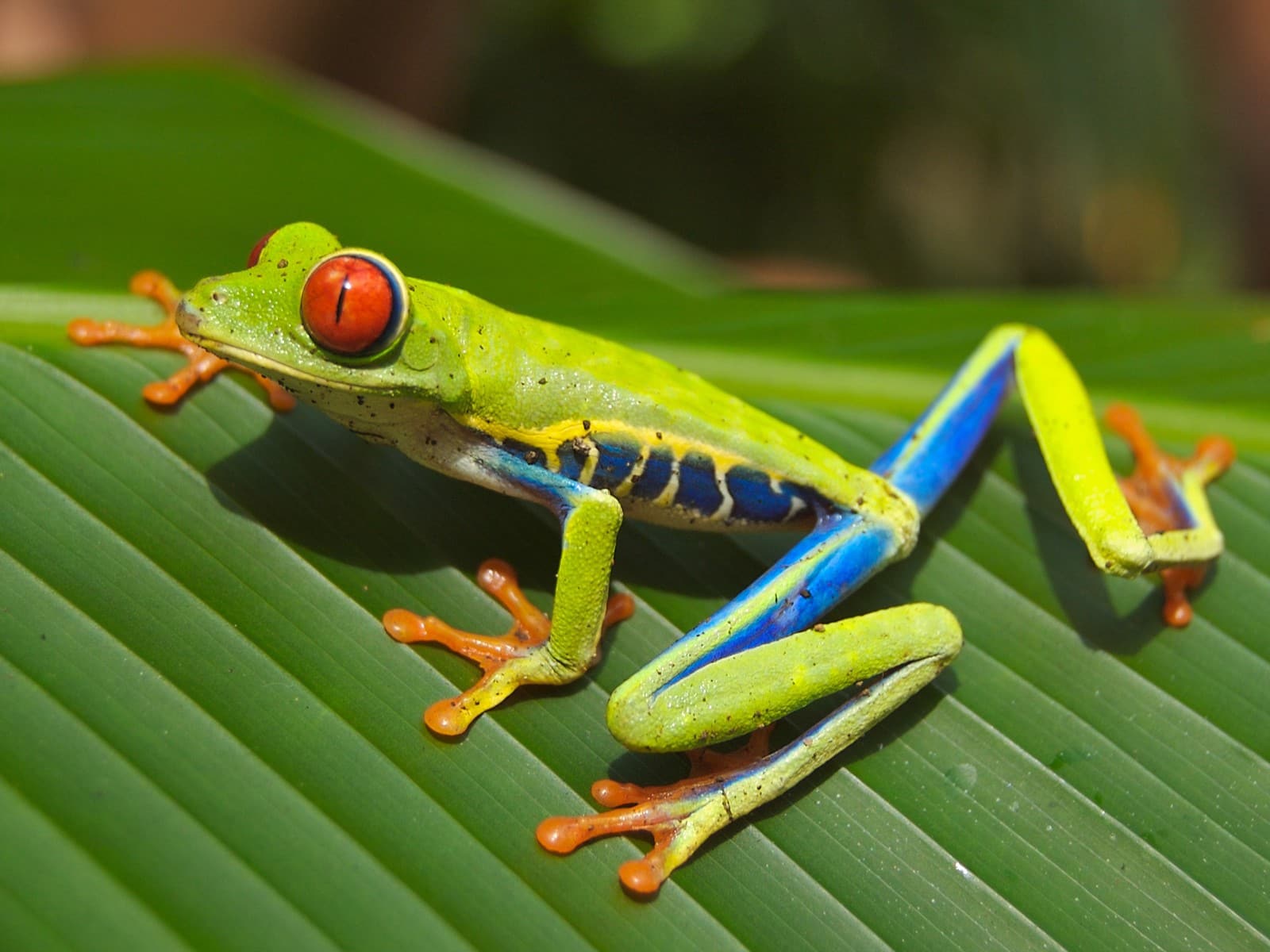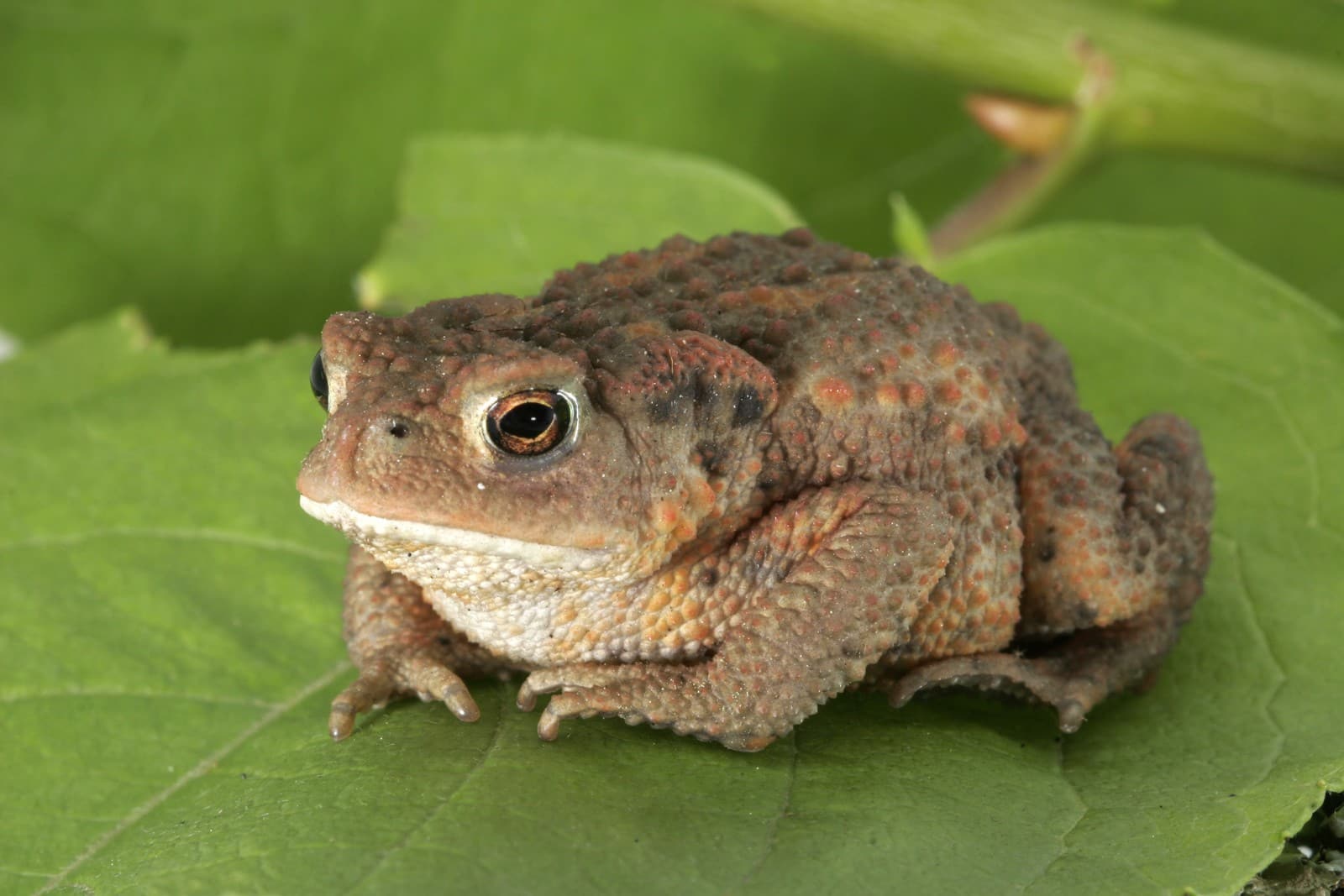Kinkajou vs Coati: A Complete Comparison
While both Kinkajou and Coati belong to the family Procyonidae alongside raccoons, these fascinating rainforest mammals exhibit striking differences in their behavior and adaptations. Kinkajous are strictly arboreal nocturnal creatures weighing 3-7 pounds (1.4-3.2 kg), while Coatis are primarily diurnal ground-dwellers reaching 4.4-17.6 pounds (2-8 kg).
The most notable distinction in the Kinkajou vs Coati comparison lies in their specialized adaptations. Kinkajous possess a prehensile tail and modified wrists for life in the canopy, whereas Coatis feature an elongated snout and powerful forelimbs perfect for foraging on the forest floor.
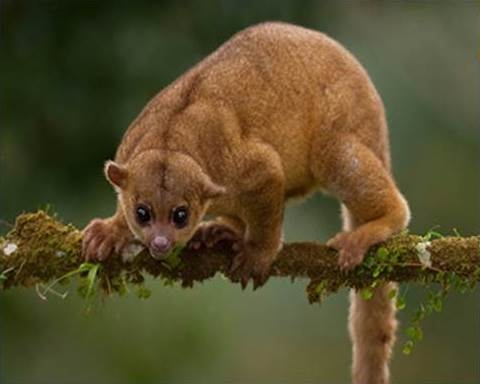
© Kalamazoo Public Library / No restrictions
The Kinkajou’s specialized adaptations for arboreal life are evident in its compact body and strong grip, enabling efficient navigation through the rainforest canopy.
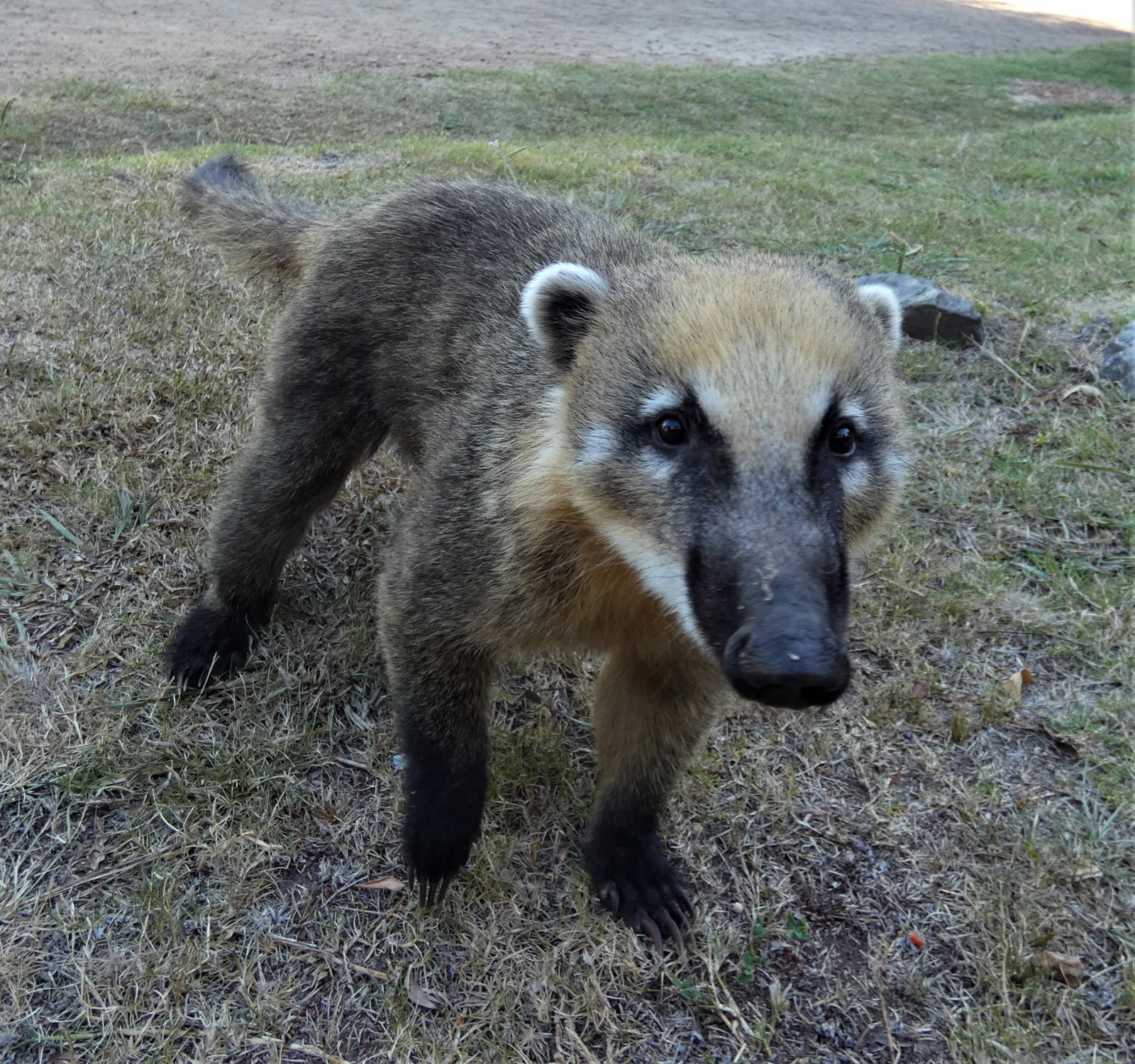
© Enrique González / CC BY-SA 4.0
The Coati’s ground-dwelling nature is reflected in its robust build and elongated snout, perfect for foraging through soil and vegetation.
Key Differences: Kinkajou vs Coati
| Feature | Kinkajou | Coati |
|---|---|---|
| Size | 16-24 inches (40-60 cm) | 13-27 inches (33-69 cm) |
| Weight | 3-7 pounds (1.4-3.2 kg) | 4.4-17.6 pounds (2-8 kg) |
| Activity Period | Nocturnal | Diurnal |
| Primary Habitat | Arboreal (tree-dwelling) | Terrestrial (ground-dwelling) |
| Diet | Primarily frugivorous | Omnivorous |
| Social Structure | Solitary or pairs | Group-living (bands) |
Habitat and Behavior
Kinkajous are perfectly adapted for life in the rainforest canopy, spending nearly all their time in trees. Their prehensile tail acts as a fifth limb, providing exceptional balance and support while navigating branches at night. In contrast, Coatis are primarily terrestrial, though they can climb trees skillfully when necessary. They spend most daylight hours foraging on the forest floor in social groups called bands.
Diet and Feeding Habits
The dietary preferences of these mammals reflect their distinct evolutionary paths. Kinkajous are specialized fruit-eaters, with about 90% of their diet consisting of fruits, flowers, and nectar. Their long, slender tongue helps them access nectar deep within flowers, earning them the nickname “honey bears.”
Coatis maintain a more varied diet as opportunistic omnivores. They readily consume:
- Invertebrates
- Small vertebrates
- Fruits
- Eggs
- Plant matter
Social Structure and Reproduction
One of the most striking differences between these species lies in their social organization. Coatis are highly social animals, with females and young forming bands of 15-30 individuals. Adult males typically live solitarily, joining groups only during mating season.
Kinkajous, however, tend to be more solitary or form small family groups. They may share sleeping sites with familiar individuals but generally forage alone or in pairs.
Who Would Win in a Confrontation?
While direct confrontations between Kinkajous and Coatis are rare due to their different activity periods, Coatis would likely have the advantage in a theoretical encounter. Their larger size, powerful build, and social nature make them more formidable opponents. However, both species typically avoid confrontation, preferring to escape potential threats.
Conservation Status and Threats
Both species face similar conservation challenges:
- Habitat loss due to deforestation
- Human encroachment
- Illegal pet trade
However, Coatis demonstrate greater adaptability to disturbed habitats, while Kinkajous require more pristine forest conditions for survival. Understanding these differences is crucial for developing effective conservation strategies for both species.
Through this detailed comparison of Kinkajou vs Coati, we can appreciate how these related species have evolved distinct adaptations and behaviors while sharing the rich ecosystems of the Americas’ tropical forests.
